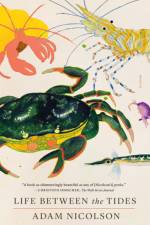av Adam Nicolson
124,99
When we read the book of nature, what do we read there? ¿All things bright and beautiful, all creatures great and small, all things wise and wonderful, the Lord God made them all,¿ says a well-known hymn. This issue of Plough celebrates the creatures of our planet ¿ plant, animal, and human ¿ and the implications of humankind¿s relationship to nature.But if nature can be read as a book that reveals the wisdom of its Creator, it also reveals things less lovely than stars and singing birds ¿ a world of desperate competition for survival, mass extinctions, and deadly viruses. Is such a world a convincing argument for the Creator¿s goodness? Turns out Christians and skeptics alike have been asking such questions since long before Darwin added a twist.Are we moderns out of practice at reading the book of nature? And if we forget how, will we fail to read human nature as well ¿ what rights or purposes our Creator may have endowed us with? What then is there to limit the bounds of technological manipulation of humankind?This issue of Plough explores these and other fascinating questions about the natural world and our place in it.In this issue:- Sussex farmer Adam Nicholson evokes centuries of handwork that shaped the landscape of the Weald.- Gracy Olmstead revisits the land her forebears farmed in Idaho.- Ian Marcus Corbin tries walking phoneless to better note the beauty of the natural world.- Amish farmer John Kempf, a leader in regenerative agriculture, foresees a healthier future for farming.- Leah Libresco Sargeant offers a feminist critique of society¿s war on women¿s bodies.- Iván Bernal Marín visits Panama City¿s traditional fishermen.- Maureen Swinger recalls to triumphs of second grade in forest school.- Edmund Waldstein questions head transplants and the limits of medical science.- Kelsey Osgood says it¿s natural to fear death, and to transcend that fear through faith.- Tim Maendel lifts the veil on urban beekeeping along the Manhattan skyline.You¿ll also find:- An essay by Christian Wiman on the poetry of doubt and faith- New poems by Alfred Nicol- A profile of Amazon activist nun Dorothy Stang- An appreciation of Keith Green¿s songs- Insights on creation from Blaise Pascal, Julian of Norwich, Francis of Assisi, Mechthild of Magdeburg, Christopher Smart, Augustine of Hippo, The Book of Job, and Sadhu Sundar Singh- Reviews of The Opening of the American Mind, and Kazuo Ishigurös Klara and the SunPlough Quarterly features stories, ideas, and culture for people eager to put their faith into action. Each issue brings you in-depth articles, interviews, poetry, book reviews, and art to help you put Jesus¿ message into practice and find common cause with others.
















